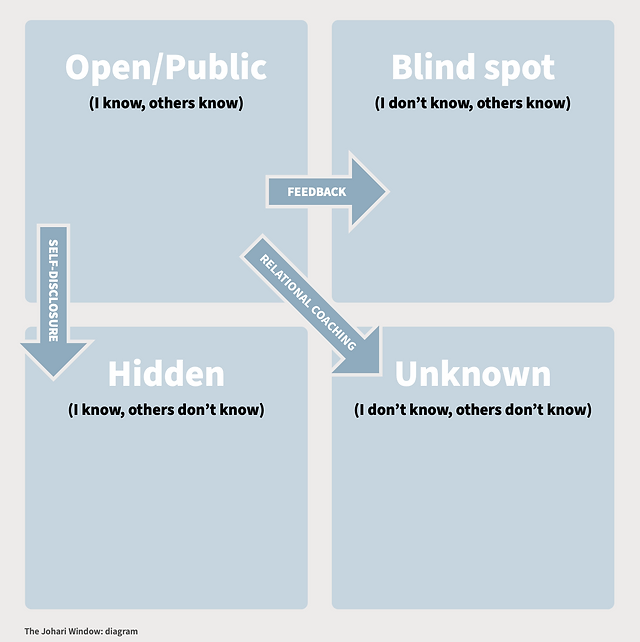Everyone has a tacitly held theory of leadership, put another way; when it comes to leadership ‘we know it when we see it’. However, there is no unified “theory of leadership”. Most consultants who have had the opportunity to work with a diverse range of leaders quickly uncover that what “it” is changes based on individuals’ personal perspectives, experiences, and mental models (Northhouse 2016). Taking a constructionist approach to my own learning, this blog post represents my efforts to critically evaluate my own theories of leadership juxtaposed with the dominant theories emerging in current literature.
The photograph above, and the three taglines, “#conscious”, “#growth”, and “#nourishment”, represent my own understanding of leadership at a particular snapshot in time. I took this picture in my backyard and feel the resulting image is rich in visual metaphors, a useful tool when engaging in reflective learning (Korthagen & Nuijten 2022).
Conscious
In the image a girl’s cupped hand hold water over the plant, an action requiring immediacy and conscious focus. She has prepared the soil, planted the seed, and feed and watered the tomato plant. Each action has been taken deliberately and consciously. Thought and planning has gone in to growing the plant.
Conscious leadership represent my personal global theory of leadership. Another phrase which encapsulates what is means to be a conscious leader might be “leadership by design”. Consciousness represents three interrelated concepts.
The first is conscious about self. A leader who can ask themselves and others how they are experienced, identify blind spots and biases, and recognise their own strengths is a leader that can be effective. This concept of consciousness dovetails with the model of self-awareness called the Johari Window (see figure 1; Verklan 2007). A leader that can extend their self-knowledge to that which they are currently blind too and are willing to share what is hidden for the benefit of followers, is a leader who can become transformative (Tran 2016).
The second concept is conscious of others and the third is conscious of their community. Gardner et al.’s (2011) work on authentic leadership emphasises two criteria of leaders which I have always found critical in my personal experience of inspirational leaders. Conscious leaders are sensitive to the needs of those around them and conscious of their impact on the wider world. This is especially relevant now, as organisation search for socially responsible leaders (Jones 2012).

Growth
The girl has invested layers of time and effort into the single tomato plant, and it has not yet fruited. Care has been taken to remove weeds and pests, with a focus on growth for mutual benefit. The plant is cared for, and her labour will eventually bear fruit.
Growth of anything other than company profits was largely seen as outside the purview of corporate leaders for many decades. Transactional leadership theory, first described by Weber in 1947 and later by Bass in the 1980s, treated employees as unchanging and uncomplicated slot machines, where particular inputs would result in the correct outputs (Arenas 2019). This matched the endless drive towards profits over people which characterised the 1980s. It was not until the model of transformative leadership was introduced and shown to result in better outcomes for a range of criteria from staff retention to higher profits, to less errors and better corporate reputations, that the concept of staff development was seriously considered (ibid). For the first time, leaders were encouraged to think about the growth of their staff as a key aspect of their role. The popularisation of servant leadership by accessible influencers like Simon Sinek has truly driven the adoption of follower focused leadership. Servant leadership positions the performance of leadership as acts of service towards serving members of the organisation (Dierendonck & Patterson 2018).
Servant leadership was the first theoretical model I encountered as a young leader and it meshed well with my concept of my role as a team leader at the time- I considered the team my “work family” and my role as that of a parent; developing their capacity, nurturing their growth, and correcting any missteps. My first question when something went wrong was, “did I make this clear/ explain this correctly/ set a clear limit?” and secondly, “how can I best motivate this individual to do this differently?”. Once I moved into senior management, I continued to view growth and investment as a key priority but widened my scope to include the organisation as a whole. As the Head of Learning and Development I ask myself, “what organisational development opportunities do we have?”, and “what strategic growth opportunities exist in the market that would better allow us to serve our community?”. A moral commitment to the growth and development of your staff and organisation is powerful, because it improves the quality of a leader’s performance whether they are managing processes or strategies and is applicable whether their portfolios are multimillion dollar projects, or small, local teams.
Nourishment
The photo captures a moment of nourishment, water is cupped in the girl’s hands, ready to be sprinkled over the plant.
Despite concepts like servant leadership rising in prominence, leadership development continues to focus on leaders with followers viewed as a faceless mob waiting to be influenced. In transformational leadership, great weight is given to the ability to influence and transform, with little consideration of the agency of followers, except as it relates to their commitment to the leader’s vision. However, leadership is exclusively relational (Uhi-Bien & Ospina). A leader can only exist where there are followers willing to work as a group and follow a unified vision. An entrepreneur is distinguished by their relational opposition to the status quo of the industry they are changing. Their ideas, products or organisations only gain traction once enough people evaluate their innovation and chose to adopt it. To achieve growth, leaders must nourish their staff and shelter them from environmental toxins. As seen from research on authentic leadership, leaders must also ensure their own behaviour is perceived as nourishing by their staff (Avolio & Gardner 2005).
While conventional leadership programs often try to teach participants skills associated with coaching and self-reflection, they continue to perpetuate the idea of followers as slot machines, with engagement seen as a means to an end (Schrage 2016). Instead of a focus on the bonuses, leave allowances and perks of transactional leadership wisdom, leaders are encouraged to input active listening, development planning and coaching conversations to get the high-performance output they want.
My personal model, conscious leadership, addresses this challenge by emphasising consciousness. In this case, a conscious focus on the individual views and needs of followers. Nourishment is an act of service which is timely, sensitive, and individualised to the needs of a particular follower. Importantly it is a way of being rather than “this one cool trick to improve employee engagement”. Conscious leadership couples the follower orientation of servant leadership with the self-awareness of the authentic leader model. However, it also incorporates a respect for followers as autonomous, meaning making individuals. Within conscious leadership, it should not be the role of the leader to impart values but to create shared vision and purpose, respecting and incorporating what their follower/s are bringing to a venture (Reggio, Chaleff & Lipman-Blumen 2008).
I completed this exercise with the goal of solidifying my personal understanding of leadership, while better enfolding theoretical understandings of leadership into my perspective. I feel this has been hugely beneficial, allowing me to identify leadership models which are discordant with my values and beliefs and others that resonate. I have also been able to distinguish gaps in theory and formulate my own holistic understanding.
References
Arenas, FJ 2019, A Casebook of Transformational and Transactional Leadership, 1st edn, Milton, Routledge, https://doi.org/10.4324/9781315178707.
Avolio, BJ & Gardner, WL 2005, ‘Authentic leadership development: Getting to the root of positive forms of leadership’, The Leadership Quarterly, vol.16, no.3, pp.315–338, viewed April 12, ScienceDirect Elsevier, https://doi.org/10.1016/j.leaqua.2005.03.001.
Van Dierendonck, D & Patterson, K 2018, Practicing servant leadership: developments in implementation, Switzerland, Palgrave Macmillan.
Gardner, W, Cogliser, C, Davis, K, & Dickens, M 2011, ‘Authentic leadership: a review of literature and research agenda’, The Leadership Quarterly, vol.22, no.6, accessed April 22 2023, Science Direct Elsevier, https://doi-org.ezproxy.uws.edu.au/10.1016/j.leaqua.2011.09.007.
Jones, D 2012, Who cares wins: why good business is better business. 1st edn, Harlow, Pearson.
Korthagen, FA & Nuijten, E 2022, The power of reflection in teacher education and professional development: strategies for in-depth teacher learning, New York, Routledge.
Northhouse, P 2016, Leadership: theory and practice, California, Sage Publications.
Riggio, Chaleff, I, & Lipman-Blumen, J 2008, The art of followership: how great followers create great leaders and organizations, 1st edn, San Francisco, Jossey-Bass.
Schrage, M 2016, ‘Engagement is a means, not an end’, Harvard Business Review, accessed April 16 2023, https://hbr.org/2016/02/engagement-is-a-means-not-an-end.
Tran, B 2016 ‘Communication: the role of the Johari Window on effective leadership communication in multinational corporations’, Handbook of Research on Effective Communication, Leadership, and Conflict Resolution, p.405–429.
Uhl-Bien, M & Ospina, SM 2012, Advancing Relational Leadership Research: A Dialogue among Perspectives, Charlotte, Information Age Publishing, Incorporated.
Verklan, MT 2007, ‘Johari Window’, The Journal of Perinatal & Neonatal Nursing, vol.21, no.2, pp. 173-174, accessed 20 April, EBSCOHost Academic Search Complete, DOI: 10.1097/01.JPN.0000270636.34982.c8.


This was a very well researched blog about leadership and what it entails. I loved the use of quotes incorporated with the image representing your idea of leadership. The use of theories aligns with the idea of leadership being broad and complex. Looking forward to reading more of your blogs.
This was a very well researched blog about leadership and what it entails. I loved the use of quotes incorporated with the image representing your idea of leadership. The use of theories aligns with the idea of leadership being broad and complex. Looking forward to reading more of your blogs.
Hi Lauren, I really enjoyed your blog post on Conscious Leadership. Your digital image of the girl caring for her tomato plant, was effective in conveying the key concepts of conscious leadership, growth, and nourishment. Your approach to evaluating your own theories of leadership, using the Johari Window model of self-knowledge and Gardner et al.’s work on authentic leadership, helped develop your understanding of what it means to be a conscious leader. Your discussion of the historical context of transactional leadership theory and its evolution towards transformative leadership, which emphasises staff development, was insightful and demonstrated your understanding of the relevant literature. I also appreciated how you integrated the concept of servant leadership, which emphasises the moral commitment to the growth and development of staff and the organisation as a whole. Overall, your post was thought-provoking and well-researched, Great work!